All products featured are independently chosen by us. However, SoundGuys may receive a commission on orders placed through its retail links. See our ethics statement.
Sony WH-1000XM4 vs Sony WH-1000XM5
June 13, 2025




When it comes to the Sony WH-1000XM4 vs Sony WH-1000XM5, the comparison isn’t as straightforward as you might think. Since the release of the Sony WH-1000XM5, it may seem the Sony WH-1000XM4 has lost its luster, but that’s not necessarily the case. While the WH-1000XM5 active noise canceling (ANC) headphones are newer, the WH-1000XM4 still stands among the best headphones available.
Whether you need a headset for conference calls or for your daily commute, both Sony headphones perform valiantly. We’ve tested each headset in and out of the lab to give you a clear picture of which one is right for you.
- This article was updated on June 13, 2025, to add information about the Sony WH-1000XM6.
- This article was updated on February 26, 2025, to update FAQ widgets, formatting, and content.
- This article was updated on October 29, 2024, to add Multi-Dimensional Audio Quality Scores.
- This article was published on November 8, 2022.
What’s it like to use the Sony WH-1000XM5 compared to the Sony WH-1000XM4?
The Sony WH-1000XM5 features a modern design that trades in the notched headband track on the WH-1000XM4 for a friction rod adjustment system. With this new headband mechanism, Sony forgoes the yokes on the older model in favor of a trimmed-down, cleaner look. This update offers a more custom fit, but it also limits the WH-1000XM5’s mobility: You can only rotate the headphones to lay flat but can’t ball them up. Meanwhile, the XM4 can do both.
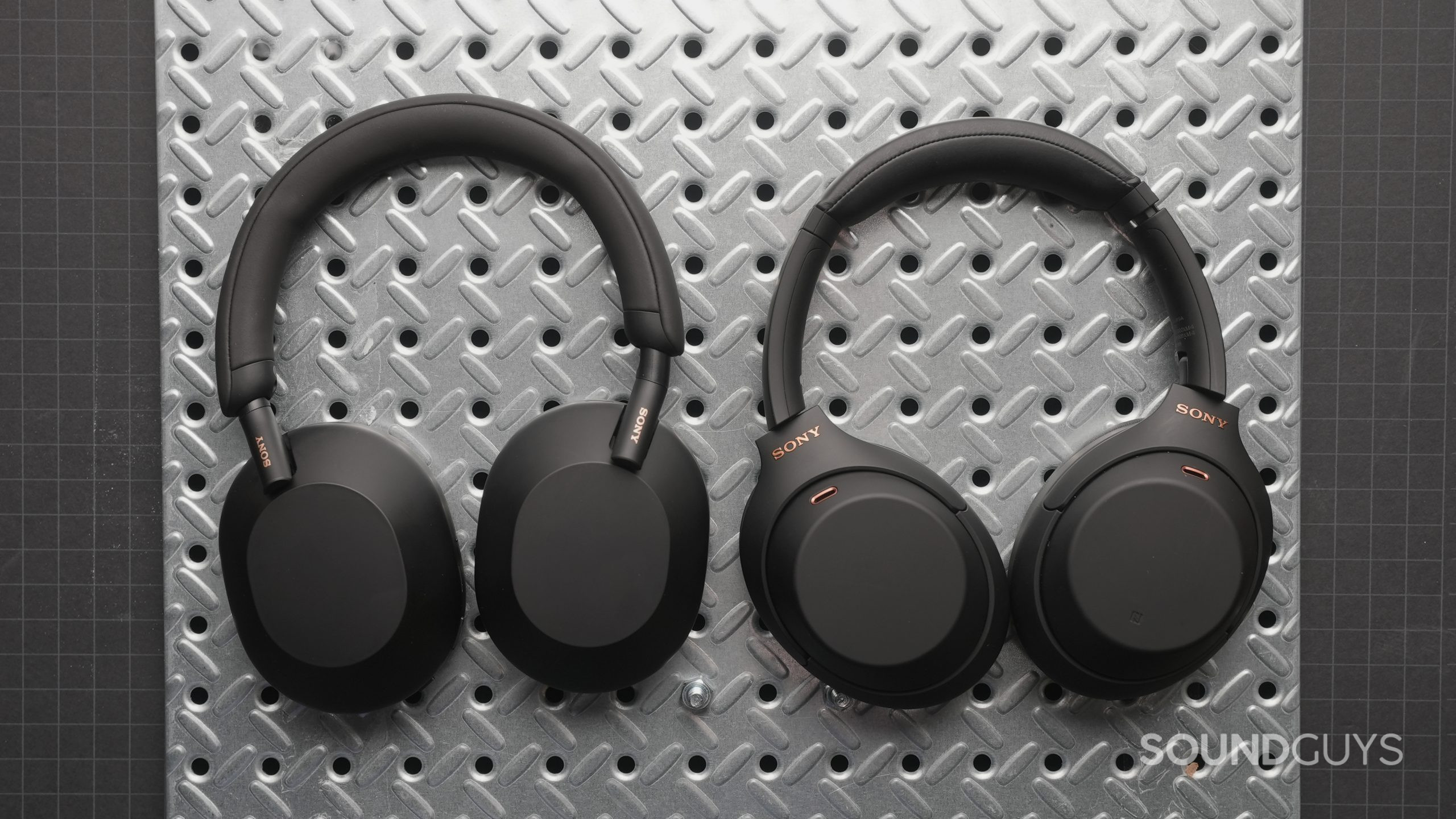
If you have larger ears, we recommend the WH-1000XM5 for comfort. Both headsets boast plush memory foam padding wrapped with soft-touch leatherette, but the padding is wider on the WH-1000XM5. No matter which Sony headphones you go with, you can replace the ear pads to extend the headset’s life.
Sony’s headphones are packed with hardware and it carries over the WH-1000XM4 proximity sensor to the fifth-generation model. With this, media immediately pauses when you remove either headset and only resumes when you don the headphones again. Sony sheathes this behind the ear cup mesh on the fifth-gen model, but it’s in plain view on the older headset. If sweat or condensation accumulates on the WH-1000XM4 sensor, this may not work flawlessly. At that point, it’s good to air out and clean your headphones. Not only will this get the sensor to work consistently again, but the XM4 lacks any kind of water resistance (along with the XM5). It’s best to avoid moisture where you can.
With either headset, you get a detachable 3.5mm jack cable for wired listening, a hardshell carrying case, and a USB-C charging cable. The case for the XM4 over-ears is more oblong than the XM5 because of the flexibility of the WH-1000XM5.
How do you control the Sony WH-1000XM4 vs the Sony WH-1000XM5?
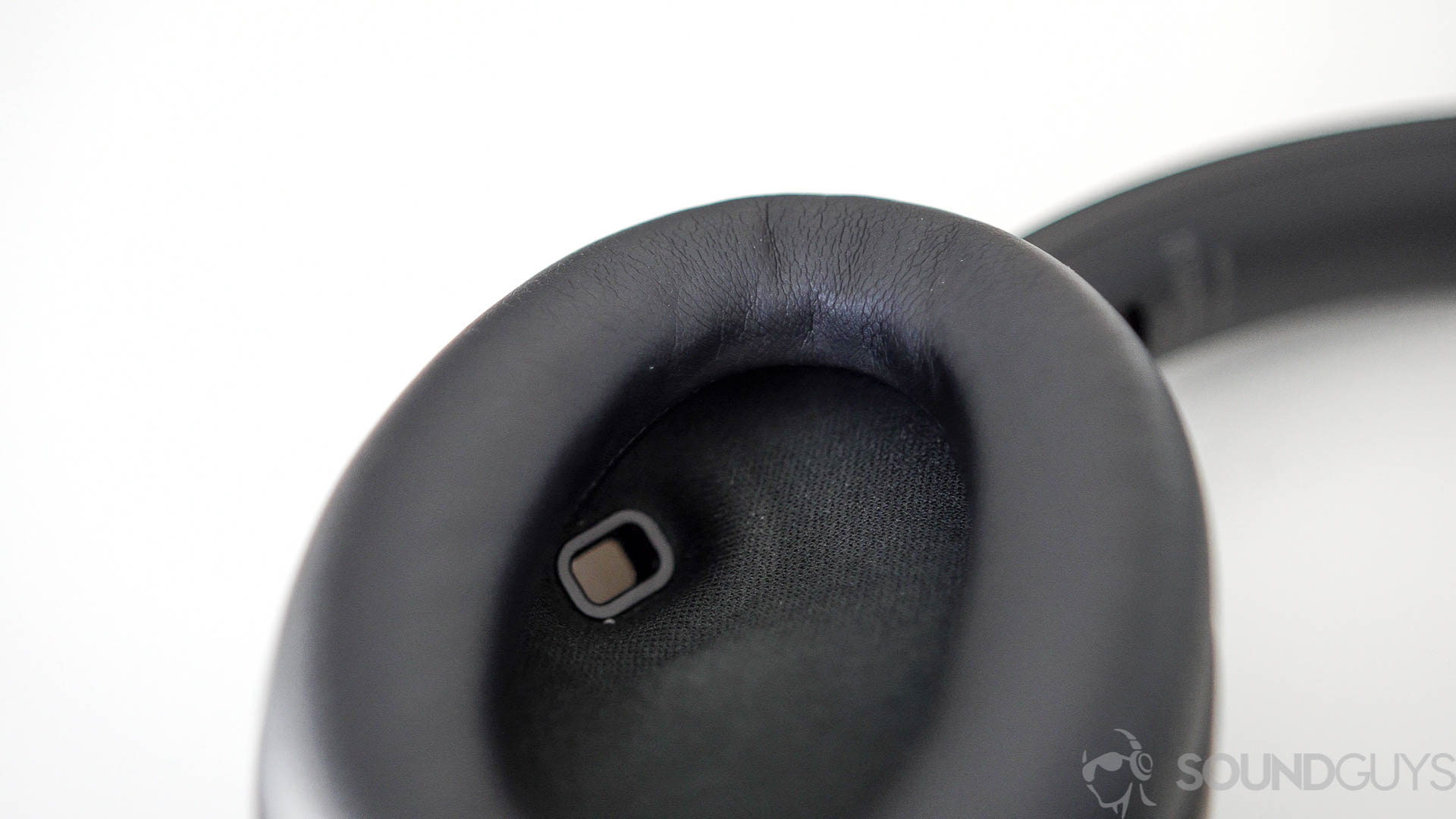
The WH-1000XM5 and WH-1000XM4 have the same controls and touch panel gestures, including the ability to cup your hand over the right ear cup for ambient mode. This listening mode allows ambient noise to come through the headset for as long as you keep your hand over the ear cup, which is a convenient way to hear your surroundings at a moment’s notice.
The XM5 relabels the WH-1000XM4’s “Custom” button as “ANC/AMB.” The function remains the same on either button, and it’s how you cycle through ANC on, ANC off, or Ambient sound mode.
| INPUT (touchpad) | ACTION |
|---|---|
Swipe up | Volume up |
Swipe down | Volume down |
Swipe forward | Track forward |
Swipe back | Track back |
Hold (center) | Voice assistant |
Double tap center | Pause / resume |
Cup hand | Ambient sound passthrough |
How are the features different on the Sony WH-1000XM5 compared to the WH-1000XM4?
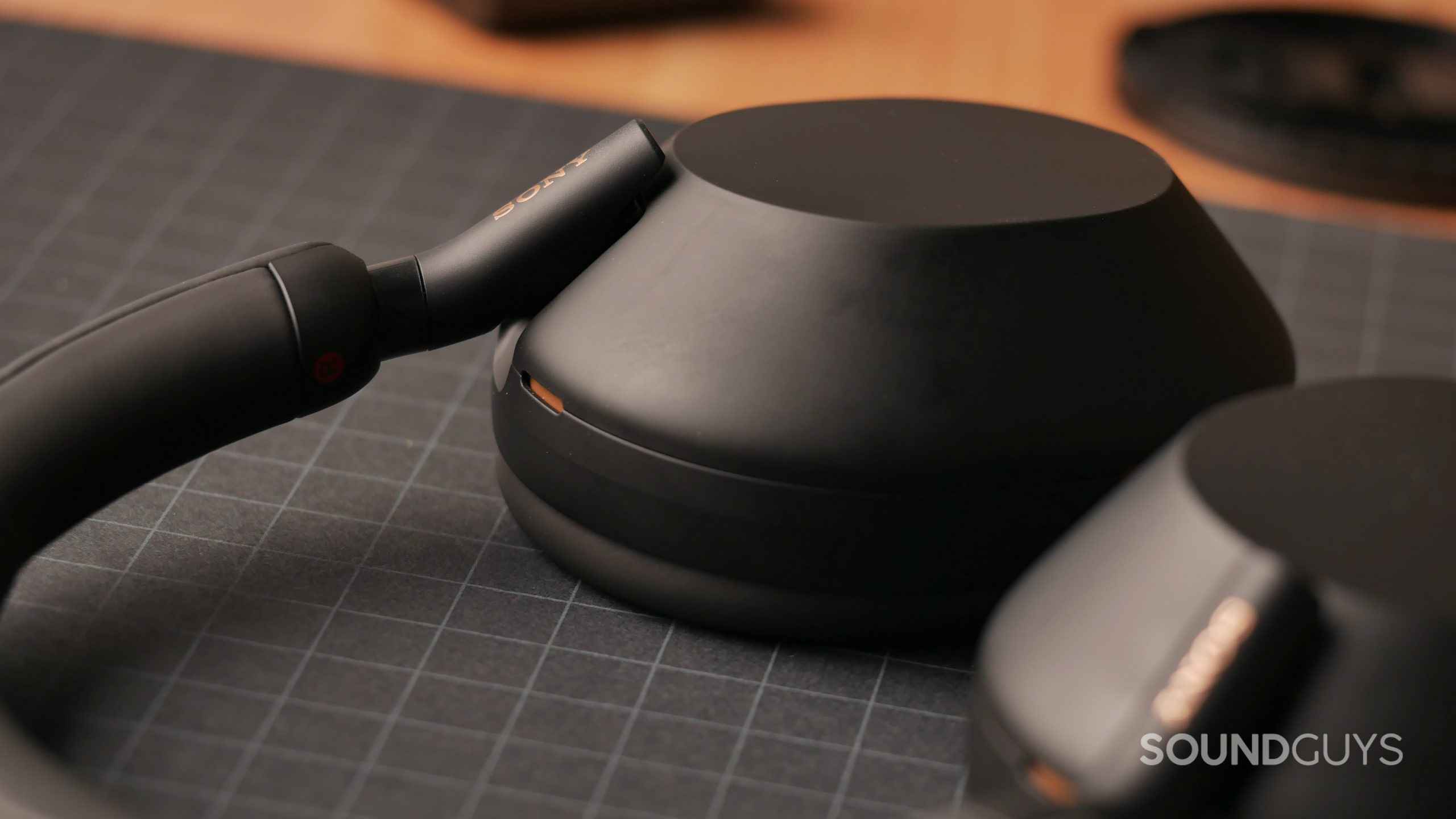
The Sony WH-1000XM5 offers the same features as the XM4, including Ambient sound controls, 360 Reality Audio and ANC optimization, speak-to-chat functionality, custom EQ and EQ presets, and more. What makes the Headphones Connect app (iOS/Android) unique is that it gives you the option to prioritize sound quality or connection stability. If you choose to prioritize sound quality, it will default to the highest quality codec available, depending on your operating system. If you choose connection stability, the app may force SBC instead.
You can also switch automatic ear detection on and off within the app for both headsets. When you turn it on, your music will automatically pause when you remove the headset and resume when you put it on. This is a nifty feature, but it can shorten the battery life, much like DSEE Extreme, which upscales compressed music files.
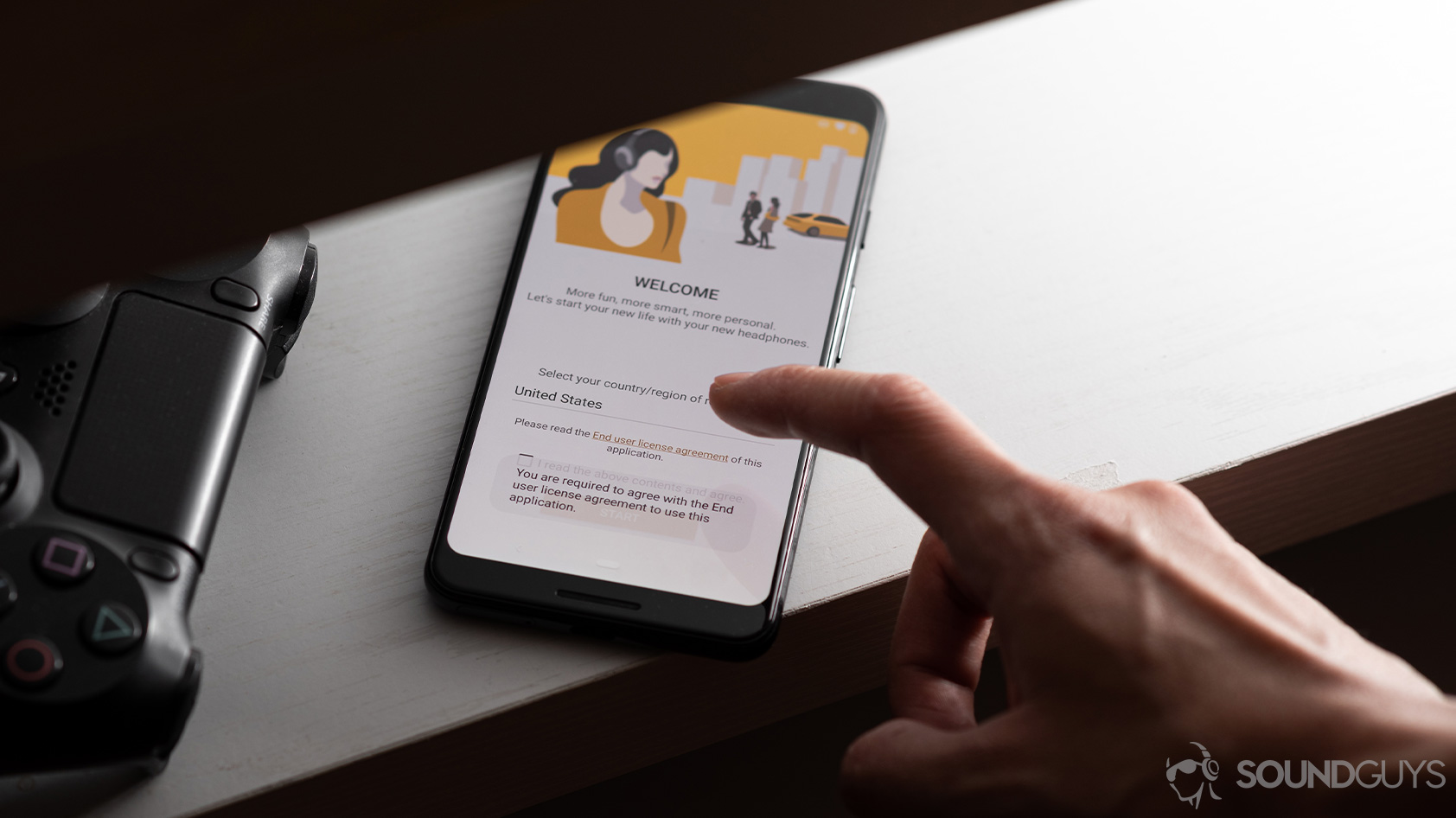
Beyond the Sony app, you can use Google’s Find My Device feature to locate either set of headphones. You’ll need to download that app and link your headphones with the account, but after that, you can tell Google to play a tone to help you locate the headphones within your apartment or check their last-known location on an in-app map.
Both Sony headsets support Bluetooth multipoint, and to enable it, follow these steps:
- Open the Sony Headphones Connect app and connect your headset.
- Select the System tab in the app.
- The first option reads, "Connect to 2 devices simultaneously." Enable this toggle.
- You cannot use LDAC with Bluetooth multipoint enabled.
- The headset will need to disconnect from your mobile device and then reconnect.
- After that, you can then simultaneously connect the headset to a pre-paired secondary device like a laptop.
How do the Sony WH-1000XM5 and WH-1000XM4 connect?
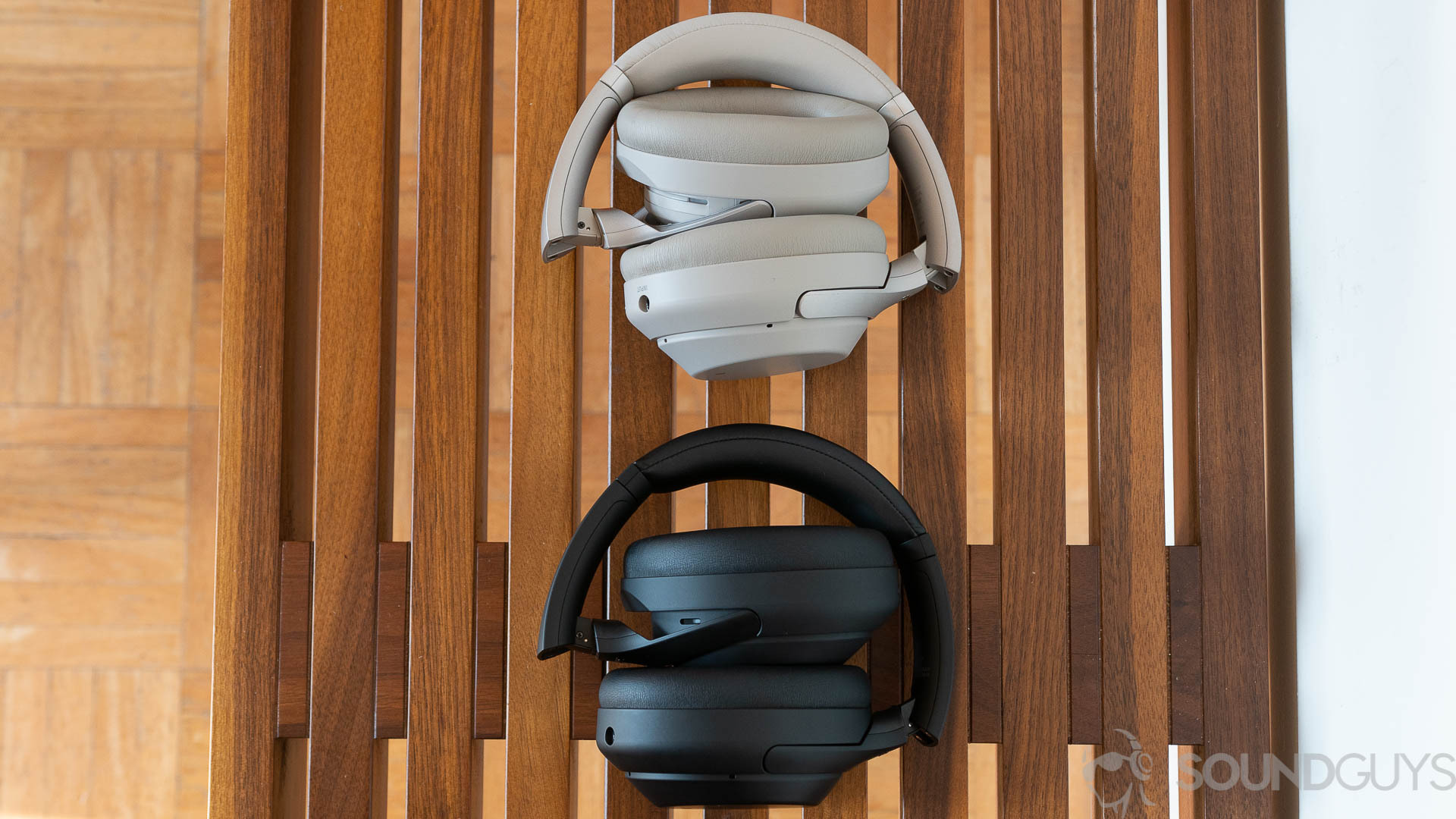
Each Sony headset supports the SBC, AAC, and LDAC Bluetooth codecs for high-quality wireless audio to iPhones and Android devices alike. Sony retains the headphone jack on its latest wireless headphones, so you can use a 3.5mm TRS plug on either device for analog playback, too. The two differ in Bluetooth versions, with the WH-1000XM4 supporting Bluetooth 5.0 and the XM5 receiving the more modern Bluetooth 5.2 version.
Any headset that uses Bluetooth 5.2 should be compatible with LE Audio and the LC3 codec once it's ubiquitous. LC3 data transfer rates range from 345kbps, right down to 160kbps. While this appears less impressive than SBC transfer rates (240-345kbps), listeners posit that LC3 audio sounds better than SBC even at its lower transfer rates. This makes LC3 a great, compact Bluetooth codec. You can read all about the benefits of LE Audio and the LC3 codec here.
How do you pair these Sony headphones?
When it comes to pairing, you can get started in the Sony Headphones Connect app and follow the prompts there for either headset. Both headsets support Google Fast Pair along with Swift Pair for Windows 10 and up. Alternatively, you can go the old-fashioned route and hold the power on button for a few seconds and wait for either headset to enter pairing mode. (You must do this from a powered-off state.) If you want NFC one-touch pairing, you’ll need to invest in the older WH-1000XM4 since Sony dropped this feature from its fifth-generation flagship.
Does the Sony WH-1000XM5 have better battery life than the Sony WH-1000XM4?
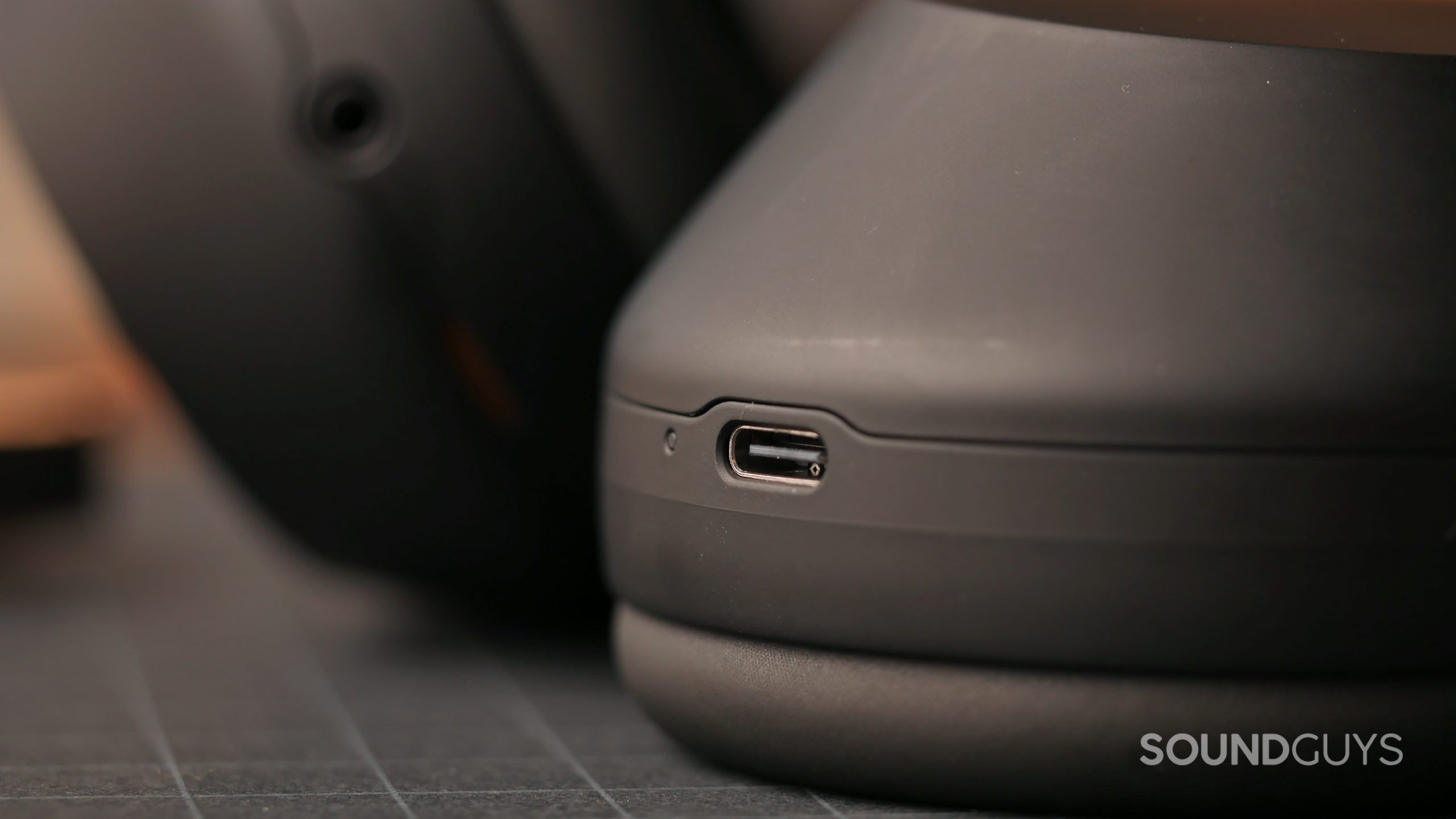
According to our standard testing method, the Sony WH-1000XM4 lasts 19 hours and 59 minutes with ANC on, which falls short of the 30-hour specification. The Sony WH-1000XM5 outdoes this at 31 hours, 53 minutes with ANC on. Both headsets support fast charging, with the newer model being more efficient. Three minutes of charging the WH-1000XM5 provides 180 minutes of playtime, compared to five minutes of charge yielding 180 minutes of playback. It’s a minor improvement but still an impressive one.
Is noise canceling better on the Sony WH-1000XM5 or WH-1000XM4?
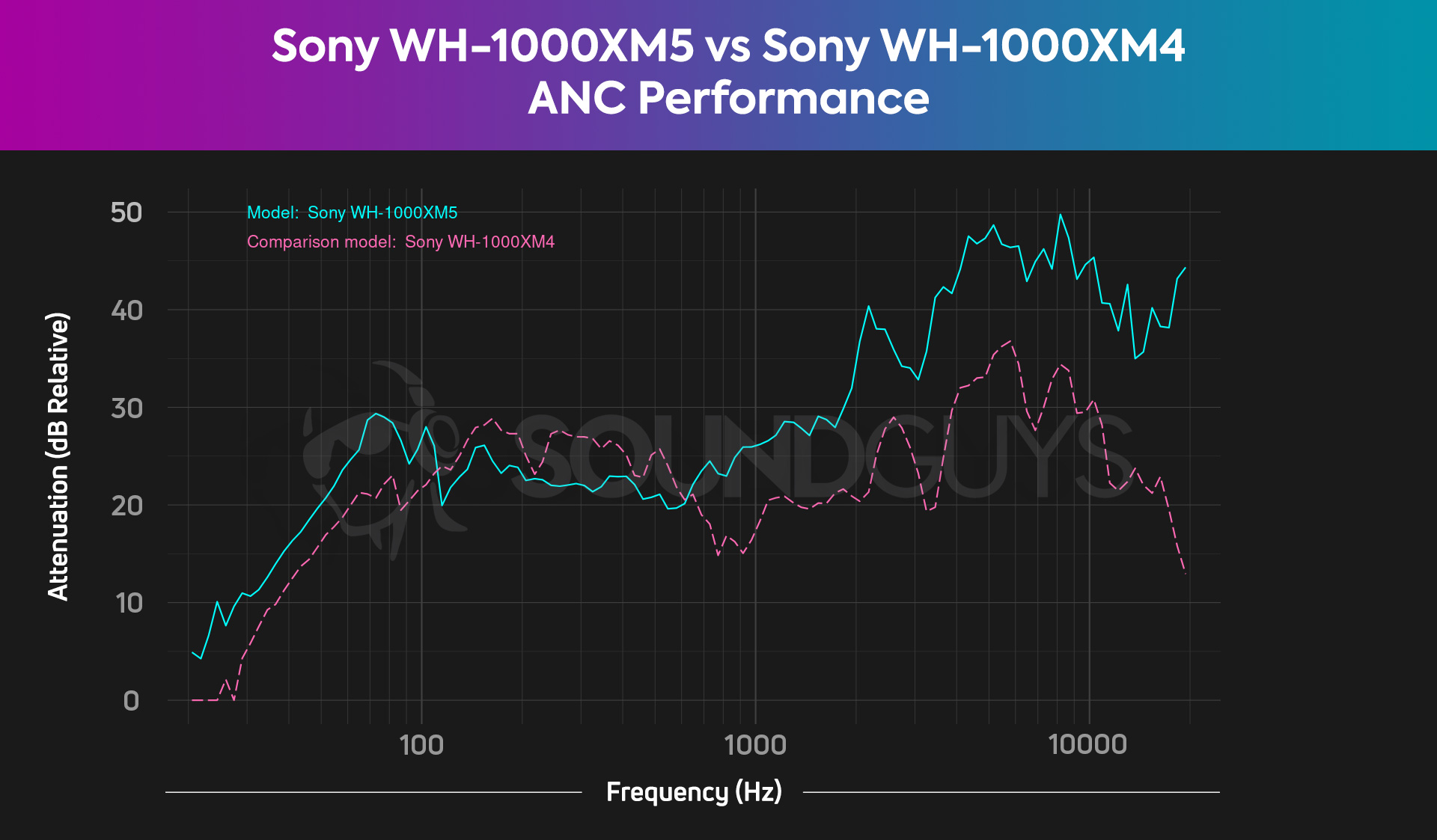
Sony outdoes itself again with the WH-1000XM5, improving on the already excellent ANC of its fourth-generation headset. If you really want to melt away sub-bass frequencies like a plane engine or subway car’s rumble, it will be easy to justify springing for the XM5 over-ear headphones. The Sony WH-1000XM4 does a very good job with frequencies from 20-100Hz, but the WH-1000XM5 just takes the cake, topping out at 30dB of attenuation at 75Hz.
Isolation is even better this time around on the XM5, thanks to the redesigned ear pads and headband. Frequencies above 1kHz are plainly blocked out by the headset’s ability to create a robust, physical barrier between your ears and your surroundings. Even if you turn ANC off on the fifth-generation WH-1000X headphones, incidental sounds like nearby chatter and clanging dishware will sound anywhere from one-eighth to one-thirty-second their original perceived loudness. This is bonkers. On its own, the WH-1000XM4 does a great job here, too, but it just goes to show just how well the newer headphones perform.
Just be aware that if you wear glasses, this won’t necessarily be the case. That’s because the arms on your glasses will interrupt the seal created by either the WH-1000XM5 or WH-1000XM4 and let noise in. Though the ANC will adapt somewhat, a comparative lack of isolation will make your noise attenuation performance suffer.
Even though the WH-1000XM5 does an objectively better job with attenuation across the board, the WH-1000XM5 and WH-1000XM4 both stand as great choices when it comes to noise canceling headphones.
Does the Sony WH-1000XM5 sound better than the WH-1000XM4?
Loading chart ...
Cutting to the chase, the WH-1000XM5 sounds more pleasing than the WH-1000XM4 out of the box and requires less work in the Headphones Connect app EQ module. Both headsets amplify bass notes relative to the mids, and this can make it hard to hear string instruments and woodwinds during particularly busy choruses. (See: An Evening with Silk Sonic, by Anderson.Paak and Bruno Mars.)
While neither pair of headphones will knock an audiophile’s socks off, these frequency responses are similar to that of other consumer headphones, with the exception of the 2-10kHz boost on the WH-1000XM4. This treble response is much louder than our headphone preference curve suggests and makes poorly mixed songs sound that much worse. The newer WH-1000XM5 has a marked roll-off beyond 10kHz and addresses the overemphasis heard in the previous generation, meaning less EQ tweaking for many listeners.
Multi-Dimensional Audio Quality Scores
The chart below shows how the sound of the Sony WH-1000XM5 and WH-1000XM4 were assessed by the Multi-Dimensional Audio Quality Score (MDAQS) algorithm from HEAD acoustics.
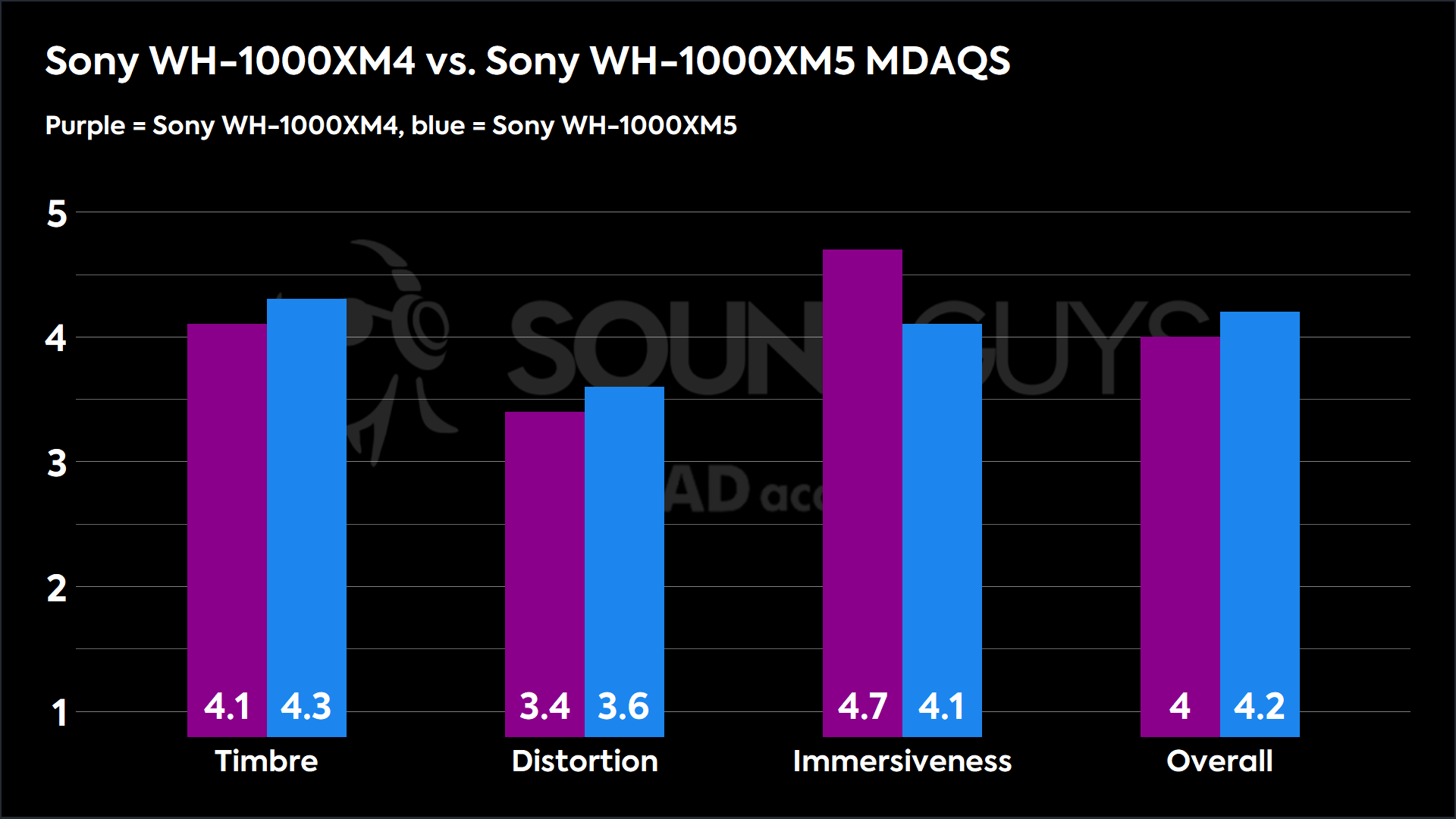
Outside of immersiveness, the Sony WH-1000XM5 edges out the Sony WH-1000XM4 in every category. While that may not be enough for some people, on the whole: more people are likely to enjoy the sound of the newer headphones than the older ones. However, both headphones seem to be able to meet the demands of most people.
Is the Sony WH-1000XM5 microphone better than the Sony WH-1000XM4?
The Sony WH-1000XM5 microphone quality is the best of the entire WH-1000X line and in terms of noise and wind cancellation, outperforms pretty much any other headset on the market. Listen and compare the demos below. Help other readers and vote on what you think sounds best!
Sony WH-1000XM5 microphone demo (Ideal conditions):
Sony WH-1000XM4 microphone demo (Ideal conditions):
As you can hear below, the XM5 handily outperforms the XM4 when it comes to sub-optimal conditions like a windy day.
Sony WH-1000XM5 microphone demo (Windy conditions):
Sony WH-1000XM4 microphone demo (Windy conditions):
Which microphone sounds better?
Should you get the Sony WH-1000XM4 or Sony WH-1000XM5?
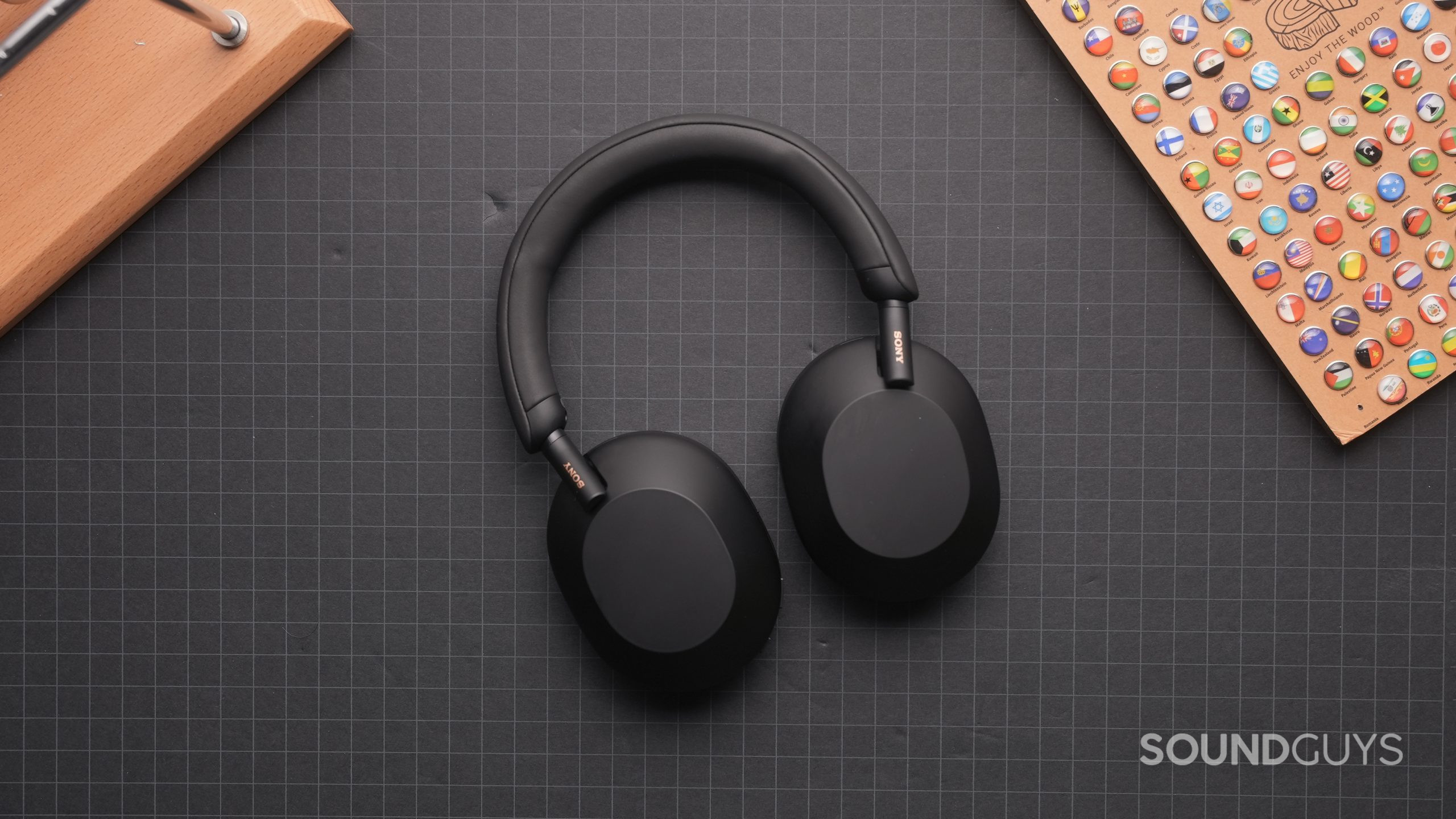
The Sony WH-1000XM5 is unquestionably the better buy for listeners who want the best active noise canceling. It also has a more pleasing default frequency response that’s easier to equalize than the treble-heavy WH-1000XM4. What’s more, if you often take hands-free calls or rely on your headphones to speak during conference calls, it really doesn’t get much better than the Sony WH-1000XM5 wireless headphones.
With that said, you can expect the Sony WH-1000XM4 to go on clearance until it can no longer be found. We have seen the WH-1000XM4 drop to $278 or even $249, which is an absolute steal. The ANC is still nearly best-in-class, and the fit is still very good for those with average-sized ears. We highly recommend either headset to listeners who want to toggle the sound directly from the app or have the option to enable Bluetooth multipoint. If you need a workhorse headset, either of Sony’s headphones will be a trusty steed, even if the WH-1000XM5 is objectively the better performer.

Outstanding microphone
Useful app features

Sound quality
Connectivity options
Auto-wear detection
Loading chart ...
The Bose QuietComfort 45 is another great active noise canceling headset with an in-app EQ and support for wired/wireless playback. If you have an Android phone, we recommend the Sony WH-1000XM5 over the Bose QC 45 because Bose’s headphones lack aptX support, offering just SBC and AAC Bluetooth codec options.
Like the Sony WH-1000XM4, the Bose QC 45 boosts treble notes much more than our house curve recommends, and you’ll run into the same issue with poorly mixed tracks. Bass and midrange notes, however, sound more palatable through the QC 45, which could make it easier to equalize since you really only need to focus on the treble response.
Loading chart ...
Battery life is better on the Bose QC 45 than the Sony WH-1000XM4, and it lasts 24 hours, 49 minutes before you need to recharge it via USB-C. This also outperforms Sony’s official 24-hour battery rating for the XM5 headphones. If you’re on a tighter budget, the $329 QuietComfort 45 is a more affordable purchase that still features excellent ANC and a very comfortable design.
What should you get instead of the Sony WH-1000XM4 and Sony WH-1000XM5?
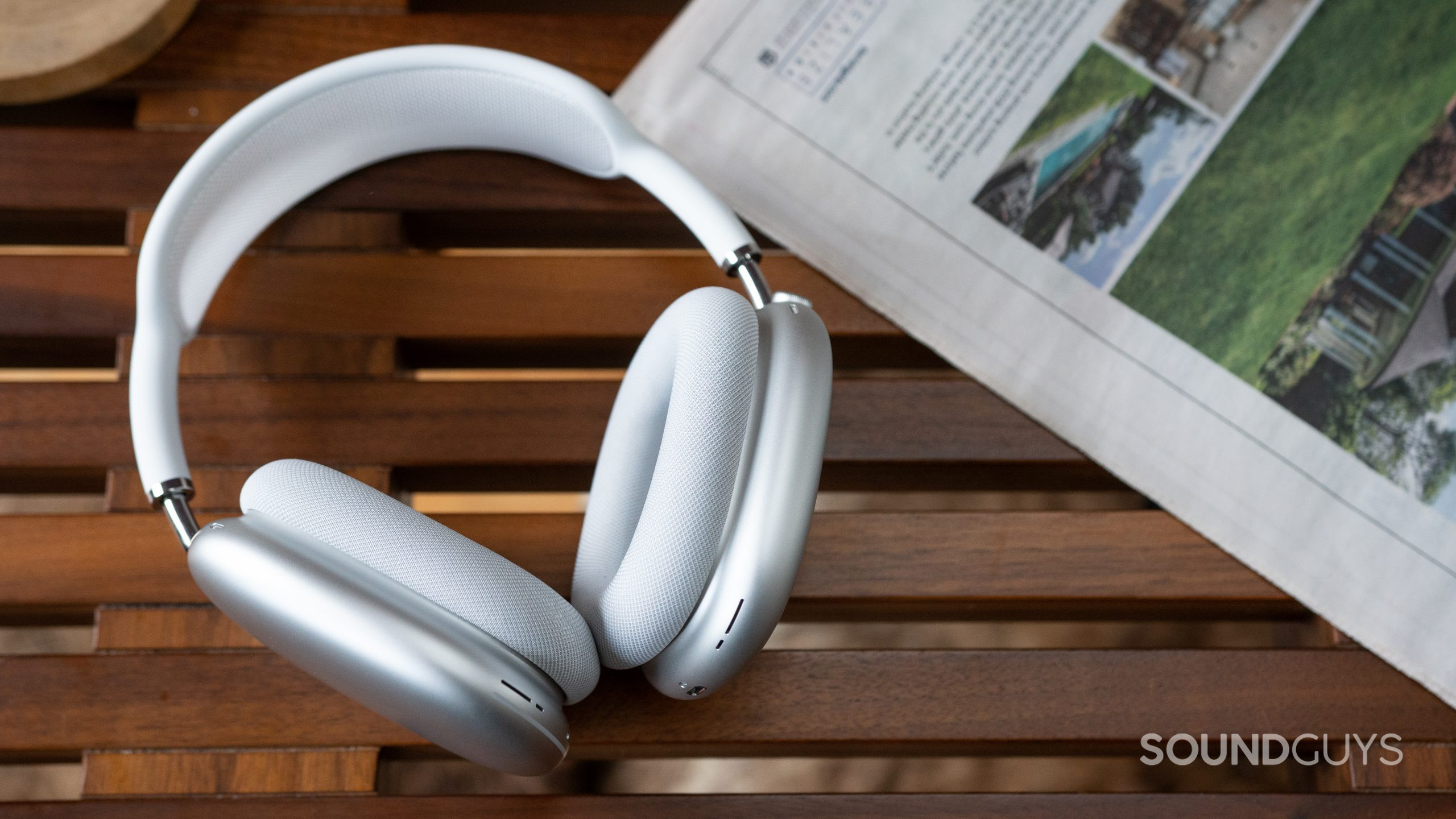
If you’ve gotten this far and decided that neither headset is for you, there are a plethora of great ANC headphones at your disposal. If you want something of a similar caliber as the WH-1000XM5, you should know that there is now a WH-1000XM6 ($448 at Amazon). You could also check out the Bose QuietComfort Ultra Headphones ($429 at Amazon). That being said, if you own a newer Android phone, it may be worth the investment to get the latest and greatest from Bose to enjoy future-proof features like Snapdragon Sound and aptX Lossless audio.
Anyone considering the Sony WH-1000XM5 may also have the Apple AirPods Max on their mind (they compare well). Once you get into this price point ($499 at Amazon), the AirPods Max doesn’t seem that absurd. If you have an iPhone, it’s actually quite a good buy with all of the conveniences that come with Apple’s H1 chip. Plus, Apple’s headphones have even better low-frequency attenuation than the WH-1000XM5, making the AirPods Max the best option for long-haul flights. Isolation isn’t as good on the AirPods Max as it is with Sony’s headphones, though.
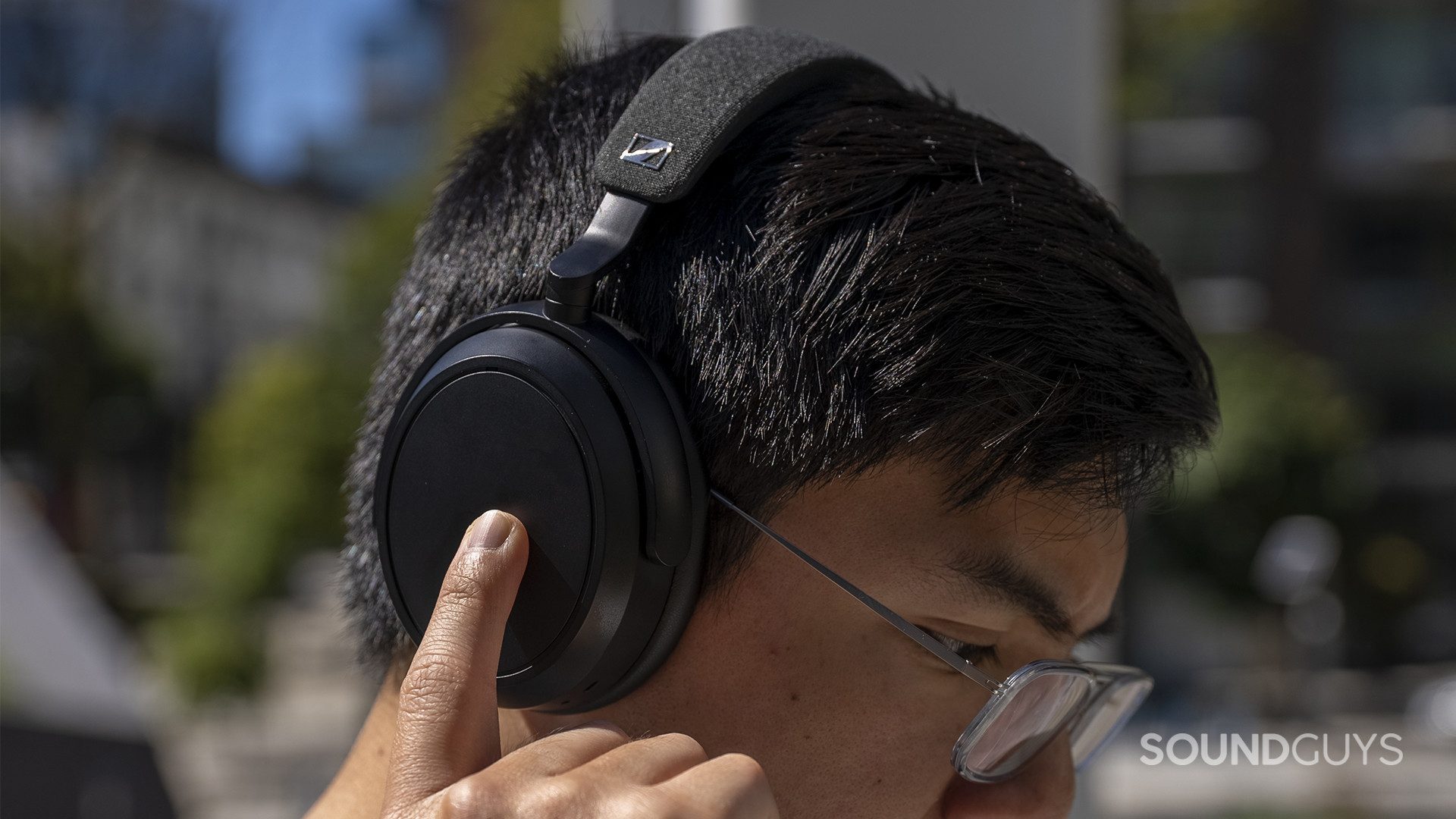
You may also be thinking about the Sennheiser MOMENTUM 4 Wireless, which is a capable and comfortable headset in a similar price bracket. Listeners who care about battery life will find the investment worth it ($289.23 at Amazon), as Sennheiser’s pair of headphones lasts 56 hours, 21 minutes. The next-best battery life for ANC headphones is the Bose Noise Canceling Headphones 700, clocking in at 37 hours of playtime with ANC on. Sound quality is very good with Sennheiser’s flagship headphones, too, but ANC can’t compete with either of Sony’s headphones addressed today.
What if you want to spend less?
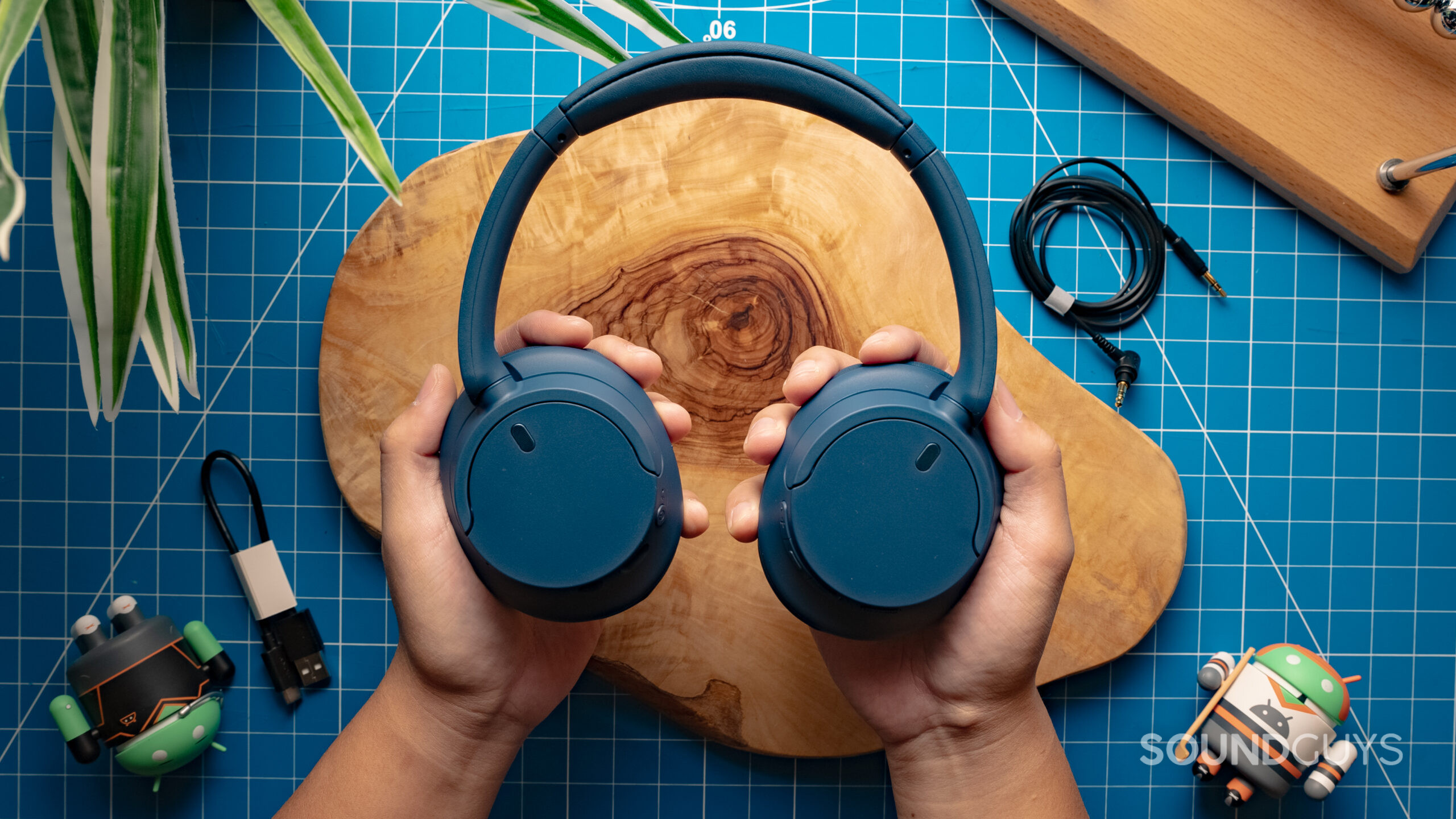
Maybe you don’t want the ultra-modern look and the cost associated with it. That’s fair enough! For those who want to stay within a reasonable budget, we recommend the Sony WH-CH720N and the Monoprice BT-600ANC.
The Sony cans certainly feel a bit cheaper than the WH-1000XM4 and XM5, but if you’re trying to save and still get the Sony experience, these are the ones to pick. They have decent ANC, and rather than touch sensors, the WH-CH720N uses dedicated buttons. You also get access to the same Sony Headphones Connect app that the flagships employ for $799 at Amazon.
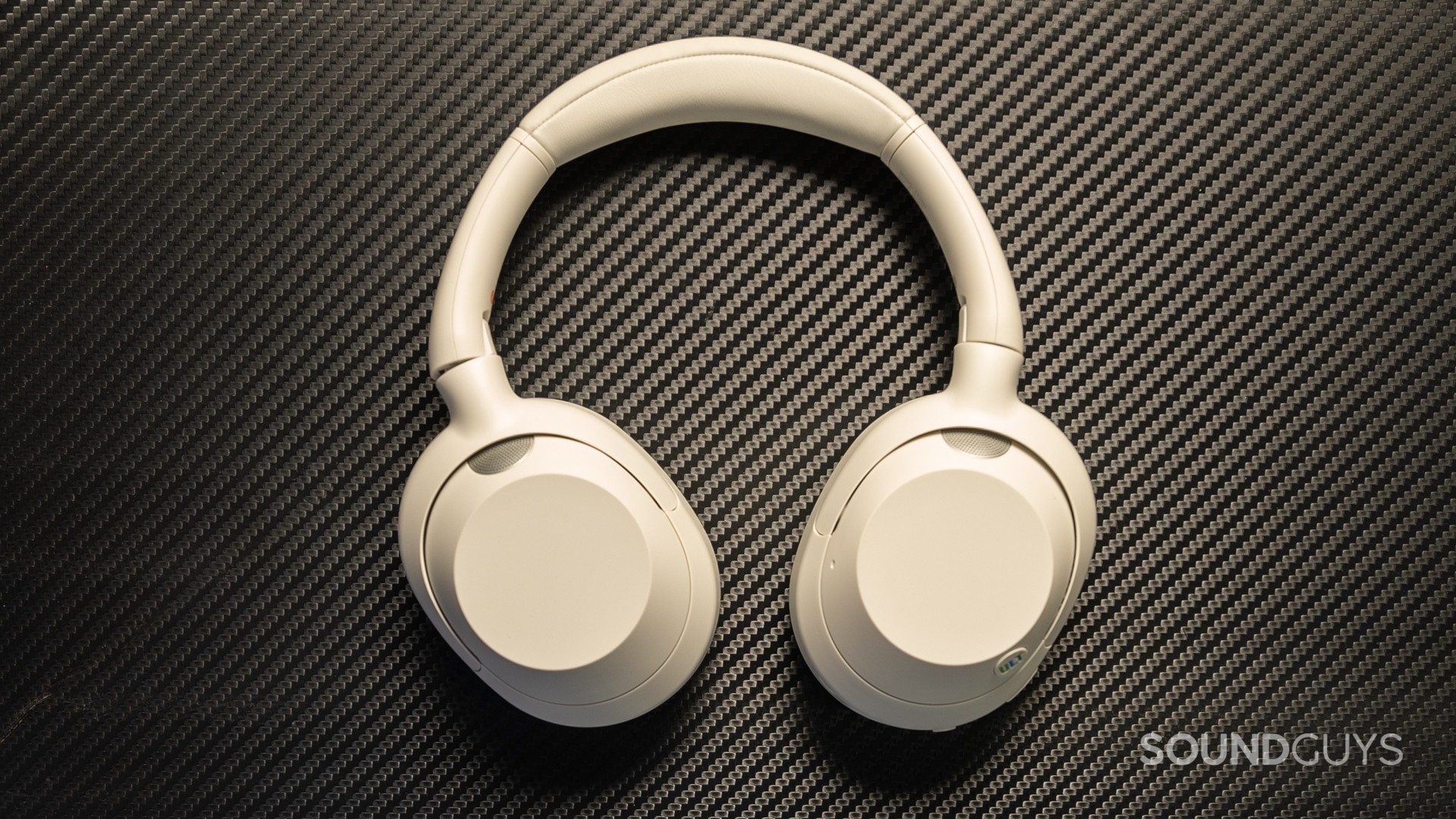
If you like a lot of bass and have big ears, consider the new Sony ULT Wear headphones ($199.99 at Amazon). They have good ANC, are very comfortable, and are fully featured while being less expensive than the WH-1000XM5.
The Sennheiser ACCENTUM Wireless ($179.95 at Amazon) might not have the best ANC, but its sound quality surpasses headsets double its price. It supports aptX and aptX HD and has the option for USB-C wired listening.
If you’re a fan of the Sony WH-1000XM5’s design style and software support but would prefer earbuds instead, then you may be interested in the Sony WF-1000XM5. Currently available for $298 at Amazon, the Sony WF-1000XM5 delivers great comfort, active noise canceling, and sound quality.
Frequently asked questions about the Sony WH-1000XM4 and WH-1000XM5
Yes, there is a significant difference between the Sony WH-1000XM4 and WH-1000XM5 headphones. The WH-1000XM5 offers improved noise cancelation, better sound quality with less need for EQ adjustments, superior microphone performance, and longer battery life. It also features a sleeker design and updates like Bluetooth 5.2.
A great pair of noise canceling headphones will nullify loud, disruptive sounds around you. Not only does this make it easier to concentrate in loud environments, but it will also mitigate the risk of incurring noise-induced hearing loss. When our surroundings are loud, and our headphones fit poorly or lack ANC, we have a tendency to increase the volume to combat the loud external sounds. While this works in the short term, it puts our auditory health at risk for permanent hearing damage. Since great ANC headsets have the ability to block out low frequencies to varying degrees, you're less likely to pump up the volume to dangerous levels.
Yes. Both headphone models can be used for wired connections.
The Focal Bathys sounds incredible, but it also comes with the tradeoff of slightly poorer ANC at a price that's more than double the cost of a new Sony WH-1000XM5.
Thank you for being part of our community. Read our Comment Policy before posting.